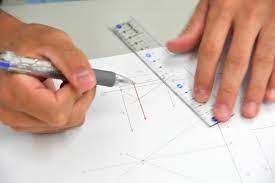
How to Measure Geometric Shapes?
In Mathematics, geometric shapes are the figures which illustrate the shapes of the things we notice in our everyday life. Geometric shapes are structures of objects with boundary lines, angles, surfaces, etc. Different types of geometric shapes can be categorised into two-dimensional (plane figures) and three-dimensional (solid figures) shapes. All these geometric shapes have specific properties that make them unique. Some examples of two-dimensional (2d) shapes are circles, triangles, squares, rectangles, rhombus, etc., and examples of three-dimensional (3d) shapes include spheres, cubes, cuboids, cylinders, cones, etc. Thus, we have different types of geometric shapes, and each of these shapes has different dimensions.
Measuring geometric shapes involves calculating the length, breadth, depth, etc. 2d shapes can be measured in only two ways: length and breadth, whereas 3d shapes can be measured in three ways: length, breadth and depth (or height). Apart from these dimensions, we can also measure the area, surface area and volume of 2d shapes. Measuring the dimensions of 2d or flat geometric shapes can be done using geometric tools. For instance, we can measure the length of the side of a triangle using a scale. Similarly, we can measure the dimensions of solid figures which have edges.
Measuring the boundary of a geometric shape refers to the perimeter of that shape. For example, we can measure the perimeter of a rectangle by adding the measurements of the length and breadth of the rectangle, which means 2(l + b), where l is the length and b is the breadth of the rectangle. Similarly, we can measure the perimeter for all the geometric figures using formulas. In Mathematics, we have standard formulas to calculate the perimeters and areas of different two-dimensional geometric shapes.
In 2d shapes, we can also measure the angles at vertices. Based on the measurement of angles, the figures are classified further. Suppose all three angles at the vertices of a triangle are equal; then, the triangle is called an equilateral triangle. Apart from the standard formulas, we can also use the vector concept to find specific parameters of 2d shapes. This kind of computation is used when the dimensions of 2d shapes are given in vector representation. Thus, we can measure the dimensions and other parameters of 2d shapes using different methods.
For solid (3d) geometric shapes, we can measure the height or depth of the shape along with the length and breadth. For example, we can measure a cuboid’s length, breadth and height. To measure the perimeter of solid shapes, we need to measure the boundary of the shape. This can be done for the 3d shapes which have flat surfaces. However, we can find the boundary using standard formulas for solid shapes with curved surfaces. Similarly, we can calculate the surface areas and volumes of 3d shapes using appropriate methods.
Thus, measuring a geometric shape depends on the type of shape. It is easy to measure the dimensions of shapes with edges or flat surfaces, but we need formulas to measure the parameters of shapes which don’t have flat surfaces.
Post a Comment
You must be logged in to post a comment.


